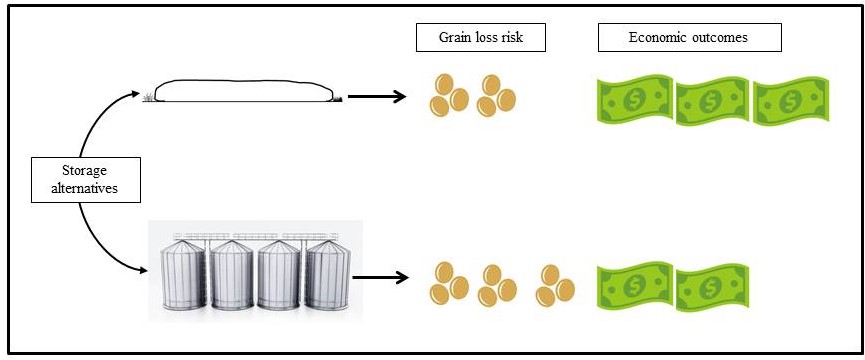Storing soybeans (Glycine max) in silo bags: economic outcomes and grain loss risk
Palabras clave:
almacenamiento de soja, silo bolsa, resultados económicos, riesgo de pérdida, poder de negociaciónResumen

Silo bags have the potential to increase grain marketing efficiency and to give farmers additional bargaining power. However, silo bags are prone to tearing that can cause grain losses. This article assesses the economic outcomes of storing soybeans in silo bags, as compared to grain commercial storage facilities, considering the risk of grain losses. A bio-economic model of soybean storage is developed and calibrated for Southeastern Argentina. The soybean loss modelling is based on empirical measurements of silo bag losses. Results indicate that both silo bag and grain storage facility profits break-even, with 2% soybean losses. When soybean losses range between 0% and 5%, optimal storage time varies from 8.5 to 9.6 months, respectively. Results show that silo bag storage may not be optimal with 10% losses, and that a 3% price premium can compensate losses of up to 5%. Silo bags constitute a feasible storage alternative that can provided more flexibility to argentine agro industrial system in situations of limited storage capacity or of logistic problems.
Highlights
- Silo bags have the potential to increase grain marketing efficiency, provide farmers with additional bargaining power and improve their economic results.
- Silo bags are prone to tearing that can cause grain losses.
- A bio-economic model of soybean storage is developed and calibrated for Southeastern Argentina.
- Silo bag and storage facility profits break-even with 2% soybean losses, and a price premium of 3% can compensate losses of up to 5%.
- Silo bags constitute a feasible storage alternative in situations of limited storage capacity or of logistic problems.
Descargas

Descargas
Publicado
Cómo citar
Número
Sección
Licencia
Aquellos autores/as que tengan publicaciones con esta revista, aceptan las Políticas Editoriales.










.jpg)




